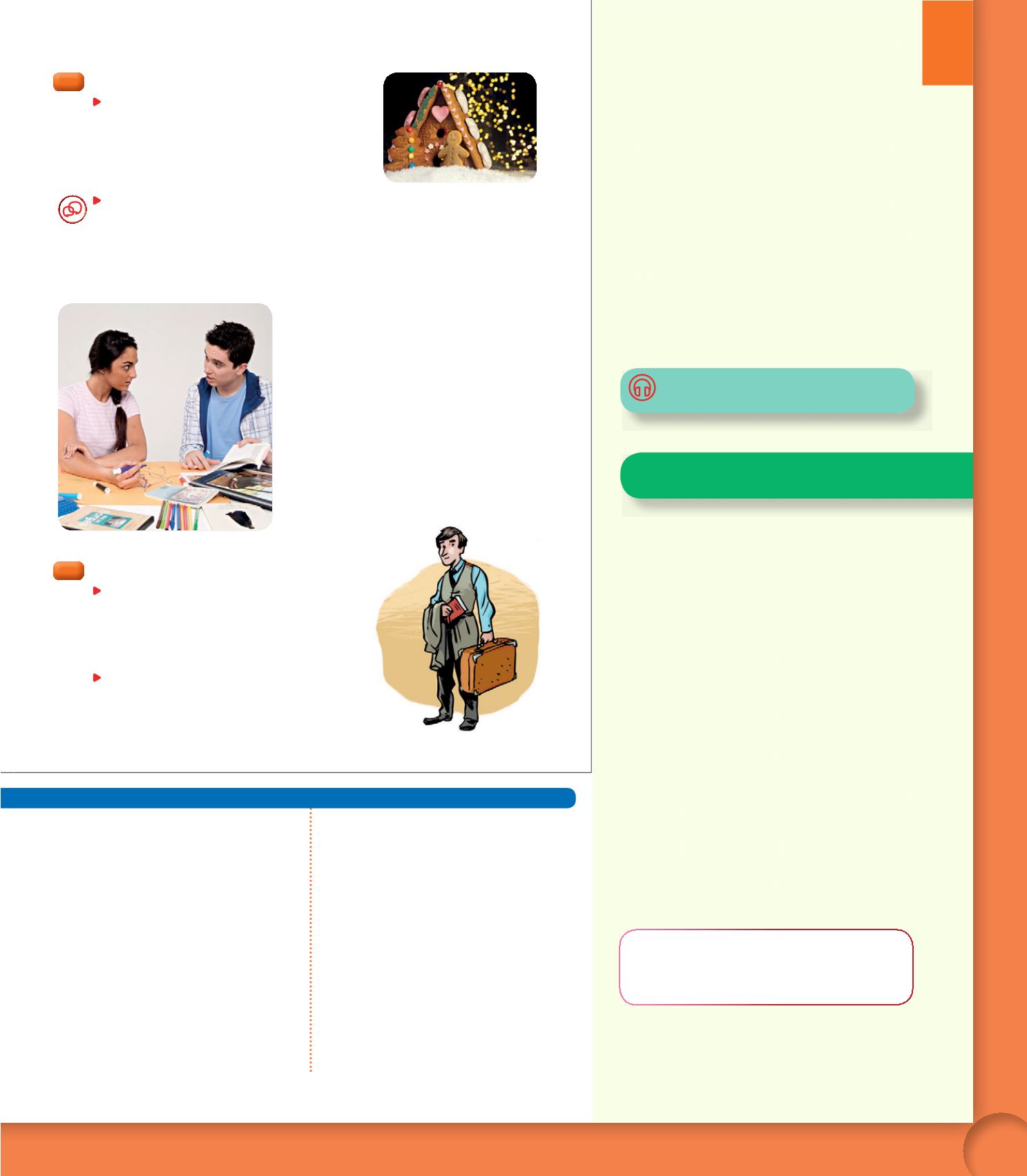

107
HERITAGE LANGUAGE LEARNERS
r
Ask students to bring in some children’s
classics from their heritage country and, if
they are not too long, read them to the
class. They should be prepared to explain
some of the more difficult vocabulary,
provide some cultural or historical
background, and point out the typical
wording at the start and conclusion of such
stories. For example:
Érase una vez
(once
upon a time),
colorín colorado, este cuento se
ha acabado
(to indicate the end of a story)
,
and
fueron felices y comieron perdices
(to
show that they lived happily ever after).
CRITICAL THINKING
r
Ask students to write a persuasive essay of
at least three paragraphs that is a defense
for either electronic books or for traditional
printed books. Students need to justify their
preference, showing the advantages of one
format over the other, as well as outlining the
disadvantages of the other format. Explain to
students that they may start their essay with
a statement in defense of their choice, and
then list and detail at least three reasons
that justify their assertion. Call on volunteers
to read their essays aloud.
75.
You may turn this activity into a contest. Ask
small groups to prepare a colorful poster with
ten reasons for reading more. Then have each
group present their poster. Display students’
posters around the classroom and have the
class vote for the best one. If possible, display
the winning poster in school.
76.
Once students present their “new” stories,
have the class decide on the version they
prefer for each tale. Ask students to justify
their choices.
AUDIO SCRIPT
See page 297M.
Answer Key
73.
Autor: Isabel Allende; Octavio Paz.
Género: cuento; ensayo.
Protagonista(s): Esteban y Alba;
un dentista; no hay protagonistas.
Tema: historia de Chile a través de varias
generaciones de una familia; la identidad
mexicana.
▶
Answers will vary.
74.
Answers will vary.
75.
Answers will vary.
▶
Answers will vary.
76.
Answers will vary.
▶
Answers will vary.
77.
Answers will vary. Sample answer:
1. Cree que pueden acercarse más al texto,
incluyendo algunos detalles sobre el
ambiente del cuento; por ejemplo, el
paisaje de la zona.
2. Answers will vary.
▶
Answers will vary.
7
7
Un cuento ilustrado
Lee
el diálogo y responde a estas preguntas.
1.
¿Cómo cree Lucas que pueden mejorar los dibujos
que han hecho para ilustrar el cuento de Borges?
2.
¿Qué cosas crees que hay que tener en cuenta
para ilustrar un relato?
Escribe.
¿Qué recomendaciones les harías a Asha
y a Lucas? ¿Cómo pueden mejorar sus ilustraciones?
Modelo
Les sugiero que les den un aire misterioso,
porque creo que encaja con el cuento que han elegido.
7
6
Érase una vez...
Elige
uno de los siguientes cuentos infantiles
y escribe una nueva versión cambiando algún
aspecto: el protagonista, el conflicto o el desenlace.
r
Cenicienta
r
La bella durmiente
r
Caperucita roja
r
Ricitos de oro
r
Los tres cerditos
r
El hombre de jengibre
Presenta
tu versión del cuento a la clase. Analiza cómo
ha afectado el cambio al argumento del cuento.
Final del desafío
Asha: Me encanta nuestro dibujo del protagonista
de
El Sur
, Lucas.
Lucas: Sí, yo también estoy contento con el
resultado. Pero deberíamos acercarnos más
al texto.
Asha: ¿Qué quieres decir?
Lucas: Pues que podemos incluir detalles sobre
el ambiente. Por ejemplo, como sabemos que
el personaje viaja al sur del país, podíamos
dibujar el paisaje de esa zona como fondo
de esta ilustración.
Asha: Me parece genial. Vamos a buscar algunas
fotos en Internet.
DESAFÍO 3
Unit
6
Comunicación
Additional Resources
Fans Online activities
Practice Workbook
339
Book 4 Unit 6


















